On a September evening in 1951, William S. Burroughs misjudged his aim while attempting a drunken party trick, shooting his wife dead. The previous year, the couple had moved to Mexico City to wait out a five-year statute of limitation on a New Orleans drug charge against Burroughs. It was during this time that, at the push of friend Allen Ginsberg, the then-unknown Burroughs had begun cobbling together what would be his first published novel, "Junkie." Written under a pseudonym, it was a more-autobiographical-than-not look into the everyday life of a multi-drug addict and heroin dealer, ending with the hopeful musing, "maybe I will find in 'yage' what I was looking for in junk and weed and coke. 'Yage' may be the final fix."
By the time the novel was published in 1953, Burroughs was deep into his journey with "yage." Soon after being charged with the unintended murder of his wife, he had fled to Colombia in search of a storied Amazonian medicinal plant that not only stripped you to your soul, but also promised to help with drug addiction. And in this quest, Burroughs had found his fix. In a series of letters to Ginsberg (later published in 2003 as “The Yage Letters”), Burroughs said it was the most powerful drug he had ever experienced: "'Yage' is like not like anything else," he wrote. “It produces the most complete derangement of the senses."
Notice: Undefined offset: 4 in /nas/content/live/stagingstmllc/wp-content/plugins/smartertravel-shared/includes/ads/includes/api.php on line 92
Notice: Undefined offset: 5 in /nas/content/live/stagingstmllc/wp-content/plugins/smartertravel-shared/includes/ads/includes/api.php on line 92
Notice: Undefined offset: 6 in /nas/content/live/stagingstmllc/wp-content/plugins/smartertravel-shared/includes/ads/includes/api.php on line 92
Notice: Undefined offset: 4 in /nas/content/live/stagingstmllc/wp-content/plugins/smartertravel-shared/includes/ads/includes/api.php on line 98
Notice: Undefined index: pass_through_args in /nas/content/live/stagingstmllc/wp-content/plugins/smartertravel-shared/includes/ads/includes/api.php on line 158
Notice: Undefined index: wrapper in /nas/content/live/stagingstmllc/wp-content/plugins/smartertravel-shared/includes/ads/includes/api.php on line 159
Notice: Undefined offset: 4 in /nas/content/live/stagingstmllc/wp-content/plugins/smartertravel-shared/includes/ads/includes/api.php on line 92
Notice: Undefined offset: 5 in /nas/content/live/stagingstmllc/wp-content/plugins/smartertravel-shared/includes/ads/includes/api.php on line 92
Notice: Undefined offset: 6 in /nas/content/live/stagingstmllc/wp-content/plugins/smartertravel-shared/includes/ads/includes/api.php on line 92
Notice: Undefined offset: 4 in /nas/content/live/stagingstmllc/wp-content/plugins/smartertravel-shared/includes/ads/includes/api.php on line 98
Notice: Undefined index: pass_through_args in /nas/content/live/stagingstmllc/wp-content/plugins/smartertravel-shared/includes/ads/includes/api.php on line 158
Notice: Undefined index: wrapper in /nas/content/live/stagingstmllc/wp-content/plugins/smartertravel-shared/includes/ads/includes/api.php on line 159
Notice: Undefined offset: 4 in /nas/content/live/stagingstmllc/wp-content/plugins/smartertravel-shared/includes/ads/includes/api.php on line 92
Notice: Undefined offset: 5 in /nas/content/live/stagingstmllc/wp-content/plugins/smartertravel-shared/includes/ads/includes/api.php on line 92
Notice: Undefined offset: 6 in /nas/content/live/stagingstmllc/wp-content/plugins/smartertravel-shared/includes/ads/includes/api.php on line 92
Notice: Undefined offset: 4 in /nas/content/live/stagingstmllc/wp-content/plugins/smartertravel-shared/includes/ads/includes/api.php on line 98
Notice: Undefined index: pass_through_args in /nas/content/live/stagingstmllc/wp-content/plugins/smartertravel-shared/includes/ads/includes/api.php on line 158
Notice: Undefined index: wrapper in /nas/content/live/stagingstmllc/wp-content/plugins/smartertravel-shared/includes/ads/includes/api.php on line 159
Notice: Undefined offset: 4 in /nas/content/live/stagingstmllc/wp-content/plugins/smartertravel-shared/includes/ads/includes/api.php on line 92
Notice: Undefined offset: 5 in /nas/content/live/stagingstmllc/wp-content/plugins/smartertravel-shared/includes/ads/includes/api.php on line 92
Notice: Undefined offset: 6 in /nas/content/live/stagingstmllc/wp-content/plugins/smartertravel-shared/includes/ads/includes/api.php on line 92
Notice: Undefined offset: 4 in /nas/content/live/stagingstmllc/wp-content/plugins/smartertravel-shared/includes/ads/includes/api.php on line 98
Notice: Undefined index: pass_through_args in /nas/content/live/stagingstmllc/wp-content/plugins/smartertravel-shared/includes/ads/includes/api.php on line 158
Notice: Undefined index: wrapper in /nas/content/live/stagingstmllc/wp-content/plugins/smartertravel-shared/includes/ads/includes/api.php on line 159
Notice: Undefined offset: 4 in /nas/content/live/stagingstmllc/wp-content/plugins/smartertravel-shared/includes/ads/includes/api.php on line 92
Notice: Undefined offset: 5 in /nas/content/live/stagingstmllc/wp-content/plugins/smartertravel-shared/includes/ads/includes/api.php on line 92
Notice: Undefined offset: 6 in /nas/content/live/stagingstmllc/wp-content/plugins/smartertravel-shared/includes/ads/includes/api.php on line 92
Notice: Undefined offset: 4 in /nas/content/live/stagingstmllc/wp-content/plugins/smartertravel-shared/includes/ads/includes/api.php on line 98
Notice: Undefined index: pass_through_args in /nas/content/live/stagingstmllc/wp-content/plugins/smartertravel-shared/includes/ads/includes/api.php on line 158
Notice: Undefined index: wrapper in /nas/content/live/stagingstmllc/wp-content/plugins/smartertravel-shared/includes/ads/includes/api.php on line 159
The Vine Behind the Latest Tourist Trend
Ayahuasca vine photo by Paul Hessell via Flickr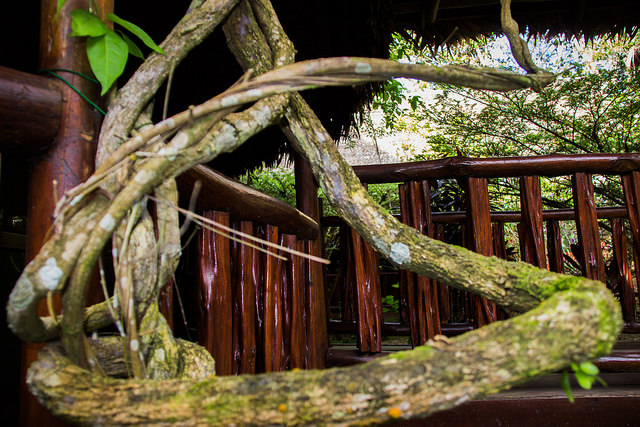
Burroughs called it “yage,” but the tropical wood vine Banisteriopsis caapi, and the brew it makes when boiled and mixed with Psychotria viridis leaves, has been been known by several names and used for thousands of years across the Americas, within Panama, Brazil, Ecuador, Venezuela, Colombia, Peru and Bolivia.
You probably know it as Ayahuasca.
It’s one of nature’s most powerful psychoactive plants which, when brewed into a tea of sorts, leads most users to experience profound visions, intense vomiting and diarrhea, and an almost unparalleled level of self-awareness. In the indigenous community, it’s referred to simply as “la medicina,” or “the medicine.” In the Western world, it’s been described as everything from the trip of a lifetime and the key to self-discovery and healing, to a “diabolical potion” and even the devil itself.
So how has this ancient sacred plant become the latest tourist trend?
Do we point the finger at our lack of religious fulfillment, and our subsequent desire to connect with nature, expand our minds, and heal ourselves in and out? Or maybe, it’s just good-old fashioned curiosity, an inherent desire for self-destruction, or a far-reaching attempt to explore yet-undiscovered territory. At least, undiscovered territory within oneself.
Speaking to God and Seeing the Devil
Photo by Fr Lawrence Lew, O.P. via Flickr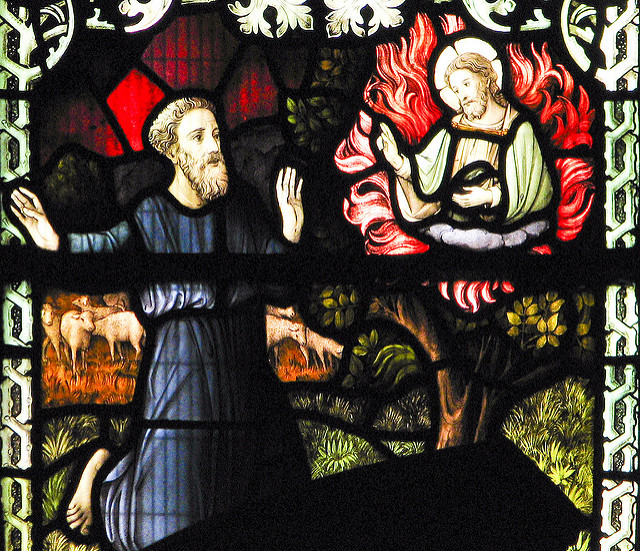
I’ve got Chris Kilham, ethnobotanist and “Medicine Hunter,” on the line. You might recognize his name from Chelsea Handler’s “Chelsea Does Drugs” episode, where he weighs in on Ayahuasca, or an episode of “Good Morning, America” during which he discussed natural libido boosters. Kilham is an expert in the medicinal properties of plants, and studies the relationship among plants, people, and culture. We are talking about why so many Western people are tuning into Ayahuasca just now, even though it’s been around for so long. He tells me that “people are leaving church in record numbers” — but that doesn’t mean they don’t feel spiritual.
Instead, he explains that he believes that the ceremonies involved with traditional Western church services don’t allow members of the congregation to be actively involved with God, yet people still seek a spiritual connection — so some are turning to Ayahuasca.
“There’s a quote out there, it more-so refers to peyote or Don Pedro,” he says. “The non-native goes to church and talks about God; the native goes into a teepee and talks with God.” It’s a powerful statement, to allude that one can connect with divinity through Ayahuasca, but it’s hardly a new point of view.
“When you accept the mind is infinite and that you can interact with spirits,” he says, “then psychotropics are part of the path to that realization.”
LSD for the 21st-Century Pilgrim
Photo of Alex Gray artwork by attanatta via Flickr
The entheogenic use of LSD in the early 1950s comes to mind when discussing this new recreational trend. In fact, at face value, Ayahuasca and LSD have a lot in common: Both have been used as a form of psychotherapy, both have been reported to cure psychological and physical ailments, and both have users who swear enlightenment through the psychoactive properties — though Ayahuasca is an entirely different, sacred beast. For example, it’s been in use for thousands of years, is part of the backbone mythology of several cultures, and involves ritualized ceremonial use lead by a shaman.
“This is a spirit medicine,” Kilham warns. “I’ve seen people lose their [minds] in a big way.” His wife, Zoe Helene, is the the woman behind Cosmic Sister, which offers grant-based Ayahuasca pilgrimages to women, and she gives a similar warning, telling me through email that Ayahuasca is “not a recreational drug — not by a long shot.” Separately, they both tell me the story of a guy in his twenties whom they led on an Ayahuasca pilgrimage in South America. He came home and tattooed his entire upper body with Ayahuasca-related symbols. “Not everyone has a perfectly idyllic experience,” Kilham says. “Assimilation back to their lives can be hard.”
That’s the strange thing I’ve learned about Ayahuasca: Even if people go through a hellish trip — like Tim Ferriss’ hours of grand mal seizures and feeling he was “being torn apart and killed a thousand times a second for two hours” — they, more often than not, go back for more. And advocate it to others.
Ayahuasca Healing co-founder Trinity de Guzman tells VICE’s Munchies that his first experience was the most difficult night of his life, yet he knew — even curled up in a fetal position during his fits of puking, shaking, and crying — that he was there “to share it with the world.”
Are its healing and therapeutic properties really that good?
Travelers in Hopes of Healing
Photo of Ayahuasaca brewing by Paul Hessell via Flickr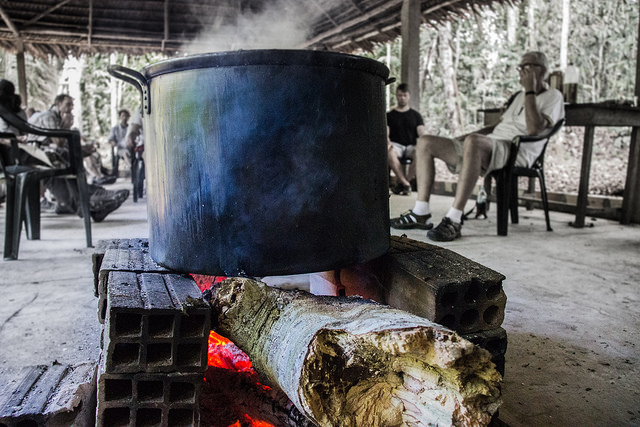
I first heard about Ayahuasca from my mom. It was 2009 and I was living in Australia when she called me up and said that she was thinking of taking a trip to Peru, where she would drink a powerful medicinal plant that would make her hallucinate, possibly violently purge from both ends, and then leave reborn, free of her chronic physical and psychological ailments that Western medicine failed to cure.
“Would you be interested in joining me?” she asked.
Like my mom and William S. Burroughs, most of those who seek Ayahuasca do so when modern medicine or their current state of mind is unable to provide them with the healing or answers they desire. (As Einstein once said, “No problem can be solved by the same consciousness that created it.”)
Chelsea Hirsch, a wellness coach and ESL teacher from Florida, who estimates she’s participated in around 50 ceremonies, says she began researching Ayahuasca (as well as the psychedelic DMT) in 2012, after two car accidents left her with post-traumatic stress disorder, copious anxiety while driving, and “lots of physical pain” that ended “with nerve shakes and tears” each night.
“I had tried so many therapies, both Western and alternative, to no avail,” she writes in a message. “Everything was painful and difficult 100 percent of the time.” So, she decided to bite the bullet and hopefully find help in Ayahuasca.
An Ayahuasca Ceremony Explained
Photo by Alan via Flickr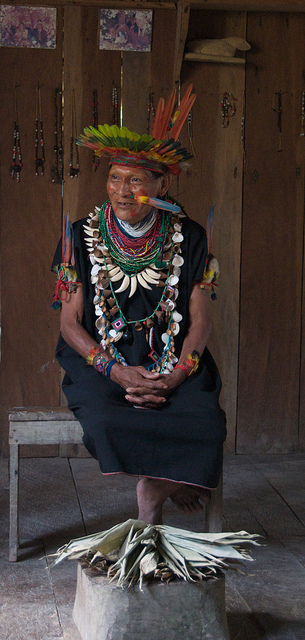
In January 2013, Hirsch took part in her first ceremony, just outside of Iquitos, Peru, a hot spot for Ayahuasca tourism. She went in with low expectations (considering her many other failed attempts at other remedies) and she didn’t undergo any major life-altering experience. Even so, Hirsch tells me “I knew in my heart, even though I hadn’t felt much during that first ceremony, that I needed to return to the jungle and try more.” And turns out, her instincts were correct.
She returned a year later and spent “nearly two months in the high jungle” of Ecuador with an 86-year-old “yachak” (the Kichwa word for shaman), his family, and her boyfriend. She immersed herself in healing and nature — and it was during these ceremonies that her PTSD and pain were finally relieved.
Considering all of her ceremonial experience, I ask Hirsch to give me the rundown on how the ceremony works in Ecuador.
Hirsch, like several of the others I interviewed for this piece, says that the ritual truly beings days (if not weeks) before the official ceremony with a stage of strict preparation when the participant must abstain from drugs, alcohol, sex, and eating certain foods. Once the ceremonial day comes, everyone gathers in a traditional “maloka” (hut), sitting on mats.
One-by-one, each person takes a cup of Ayahuasca, drinks it, and then follows it with “a cup of [Guayusa] tea that helps you keep awake.” Next, she describes how they would chew a piece of ginger to help offset the bitter taste of the Ayahuasca tea, and sit quietly while waiting for the brew to take effect.
Hirsch says that her ceremonies lasted about four hours, with the Ayahuasca taking a noticeable effect within the first 15 to 40 minutes. “After about three hours, the ‘curandero’ (healer) brings each person up and does a ‘limpieza’ (cleaning).” During the latter, participants are seated while the healer uses a palm fan to release negative energy and bad spirits. “He is fighting with them to leave,” she explains. This is the moment when Hirsch says she could feel the energy and pain from her accidents start to dissipate.
Once she had experienced her own healing from what Hirsch calls “Mama Ayahuasca,” she decided to organize retreats for friends and family back home to share the wealth, knowledge, and healing power of this ancient plant.
The Power of Word-of-Mouth
Photo by Paul Hessell via Flickr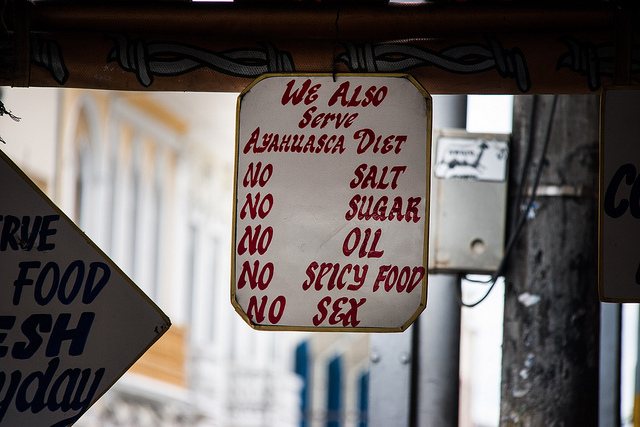
Stacy Berman, a PhD candidate in Natural Medicine and practicing shaman, has a similar story, but hers takes place in a more accessible locale for most travelers. After going on a medicinal journey to Sedona in 2006 to confront a long-standing personal trauma, Berman became a believer in the much-talked-about Ayahuasca ceremony, which is considered by believers to be one of the speediest forms of therapy, especially when compared to traditional therapy which can mean years void of results. “Literally in one weekend,” she excitedly confesses over the phone, “I went to feeling 80-percent healed.” She only drank once during that trip, but, like most others who experience Ayahuasca, she kept coming back for more.
Eventually, she began a seven-year-long apprenticeship before leading her own groups (with a maximum of six people) on Ayahuasca trips to Arizona four years ago. She says she keeps the groups small so she can “really know the people” and keep it both manageable and intimate. She also adds hikes to her group’s preparation work, so they can begin connecting to nature as soon as possible. When I ask where she advertises her program, she says she doesn’t. (Ayahuasca programs in the U.S. are illegal). “Most everyone finds out about me through word-of-mouth.”
And this is the typical way, it seems, that Ayahuasca has spread into the consciousness of popular culture over the last decade or so. In fact, five out of the six people I spoke to for this article decided to become involved in facilitating others’ journeys with Ayahuasca after their own experiences, whether it be educating others and spreading the word, organizing retreats, or even becoming a shaman themselves.
Ayahuasca’s rising popularity has seemingly created a sort of celebrity around this sacred plant; it sneaks up in TV shows, song lyrics, podcasts, and books. Famous folks speak freely about their fantastical experiences either in the press or even on stage. All types of people seek it out. Ayahuasca does not discriminate and neither do the college students, doctors, businessmen, festival-goers, scientists, therapists, artists, parents, and elderly who consume the brew.
A Trip You Don't Have to Travel For
Photo by Ludovic Betron via Flickr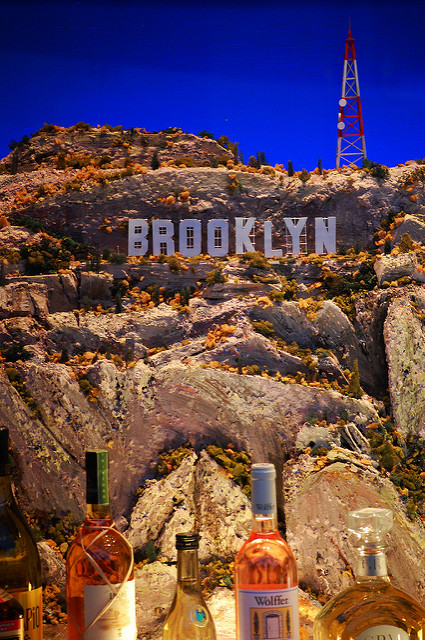
As Ayahuasca’s reputation grows, so does our general curiosity — opening it up to potential abuse by both users and administrators.
Demand is high; Kilham estimates there are around 100 or more administrators of Ayahuasca who each bring tens to thousands of visitors to the Amazon each year, the private religious organization Santo Daime receives thousands of inquiries a day, and Berman says she’s noticed an uptake in interest just in the four years she’s been leading ceremonies.
It’s become so you don’t even have to travel to the Amazon to experience this trip. In a somewhat ironic twist, Ayahuasca tourism — or pilgrimage, as Kilham prefers to call it — is available right here at home. For example, Berman leads her trips in Arizona, and Kilham tells me that Santo Daime holds ceremonies every night in New York City and Los Angeles. Until recently, de Guzman’s Ayahuasca Healing organization only led pilgrimages in Peru. Earlier this year, however, the group was given religious status in the U.S., effectively allowing the organization to publicly administer and lead Ayahuasca ceremonies within the law.
In his Munchies interview, de Guzman iterates that “in the Native American churches, this is about connecting with God yourself and having a direct experience with the Creator,” echoing sentiments from the quote Kilham shared with me.
Unfortunately, not everyone has the best intentions, for themselves or for others.
The Dangers of Ayahuasca
Photo by Rob via Flickr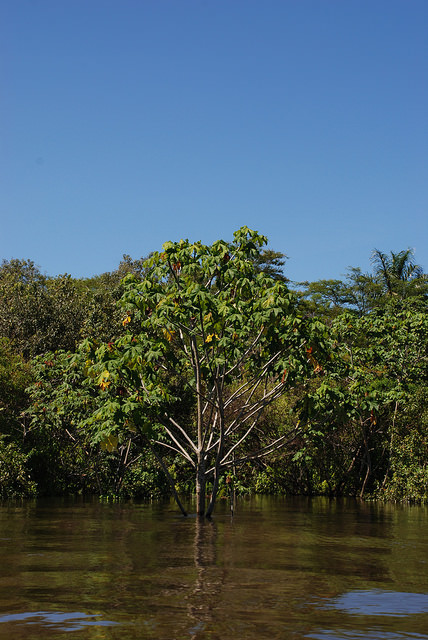
As with any trend, there are people who attempt to capitalize on it — whatever the cost.
“I have also seen the dark side of what tourism has done to this plant medicine,” Hirsch writes to me. “It has become a booming business in the Amazon, as well as here in the States, with underground ceremonies — often with shamans who are not qualified.”
One such example may be the shaman, Little Owl, who is mentioned in the New Yorker article The Drug Of Choice For The Age Of Kale. Psychedelic Feminist and Ayahuasca advocate Zoe Helene laments to me over the phone, “It was a great article, but I wish she would have followed it up by going on a [real] ceremony in the jungle.” On a different call, her husband, also mentions writer Ariel Levy’s experience, saying that no ceremony he has ever attended has been led by someone who would allow for such disruption.
Hirsch adds that “illegitimate” shamans aren’t just reserved for underground American ceremonies. “They’ve popped up in the jungle as well.”
She lays it out to me, sharing cautious tales of people being ripped off (some ceremonies can cost thousands of dollars), and “brujos” (witches) that add dangerous plants into their brews to make them more psychoactive — something that is usually done to satisfy the expectations of the Western tourists, and that can be at best overwhelming, and at worst, deadly.
A simple Google search for “tourist Ayahuasca deaths” brings up an alarming number of stories ranging from a participant fatally stabbing another to a mysterious death and cover-up.
For those both new and familiar to Ayahuasca, it can be hard to discern who and what is legitimate versus fake.
Tom Clark, a friend’s brother from South Africa, tells me that he went on a two-night ceremony a few years back. He’s careful to say that it was led by “an experienced duo” and that, though they had a few years’ of experience between them, “to call them shaman would be a little over-the-top.” (It’s also interesting to note that Clark, a devout seeker of spirituality, prefers meditation to Ayahuasca, and is the one person I spoke to that skipped the itch to go back for more.)
When I asked Berman, Kilham, and Helene on the best way to find a reputable shaman, they all suggest that it’s not an easy task. While the general consensus is by recommendation, Helene warns that even if someone you know has had a positive experience with a shaman, that shouldn’t vouch for them entirely. Kilham adds that you need a “highly trained” shaman. “This doesn’t mean someone who that’s been to Peru and drank a few times. You need to look for someone who has gone through the proper training on how to lead.”
Cultural Appropriation or Cultural Preservation?
Which brings up an interesting point: while spending time in Ecuador’s jungle, Hirsch says she learned that “people don’t become shaman. You are born marked as a shaman.” It’s a common belief held by many indigenous tribes, leading to the question of whether or not our Western interest in Ayahuasca, and all the subsequent underground ceremonies, suffer slightly from a case of cultural appropriation.
It’s a topic that I cover with both Helene and Kilham, and both give me the same surprising answer when I ask what the tribal shaman think about this newfound Western interest in one of their most scared spirit plants. The answer: most of them don’t mind.
“Shamanism is dying off in these small villages,” Kilham elaborates. “Shamanism is considered to be inherited through your bloodline in most cultures.” He comments on the modern world’s waning interest in ancient traditions, even in small villages. “The new generations are leaving their villages and duties as shaman to pursue better-paying jobs like taxi drivers and housekeepers.” He explains that the growing interest from non-natives is resulting in a resurgence of native shamanism and, consequently, the preservation of its culture.
Separately, Helene argues the point that people like herself, her husband, and anyone who is respectfully approaching this plant medicine, and who incorporate their Ayahuasca experience into their lives at home, are contributing to the cultural preservation — not appropriation — of this sacred vine and culture.
And, no, if you were wondering, I never did take my mom up on that offer…but it’s certainly something to think about.
Related Links:
- 5 Minor Offenses That Will Have You Serving Hard Time Abroad
- What It’s Like to Ditch Your Career, Move to Hawaii, and Sell Coconuts
- 4 Major Concerns Among American Travelers Right Now
- What Is Genocide Tourism?
Pinterest background image courtesy of Paul Hessell via Flickr.
All products are independently selected by our writers and editors. If you buy something through our links, Oyster may earn an affiliate commission.